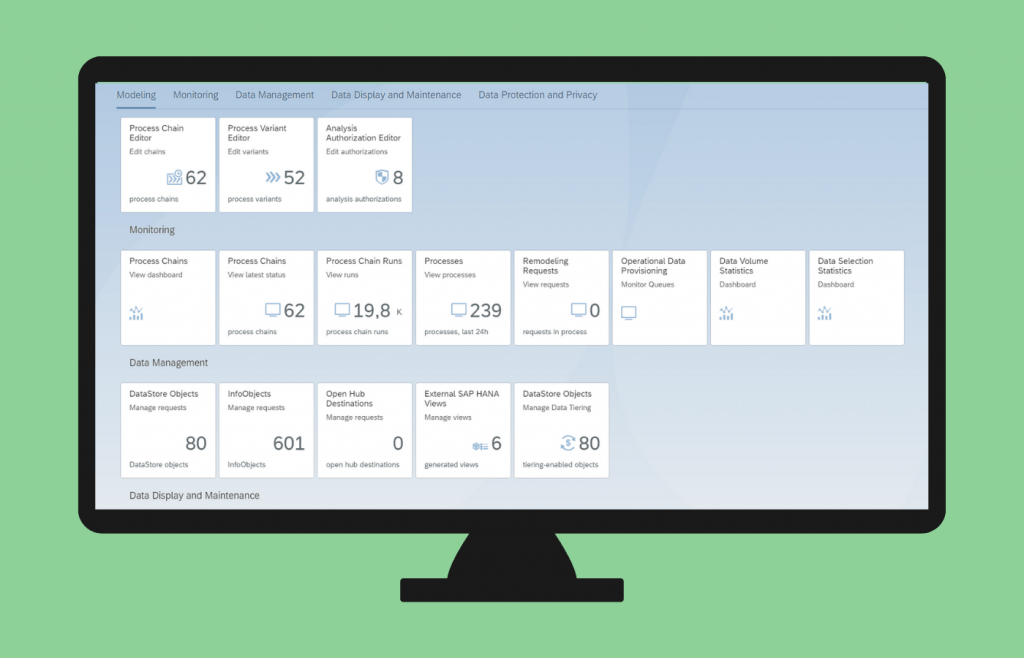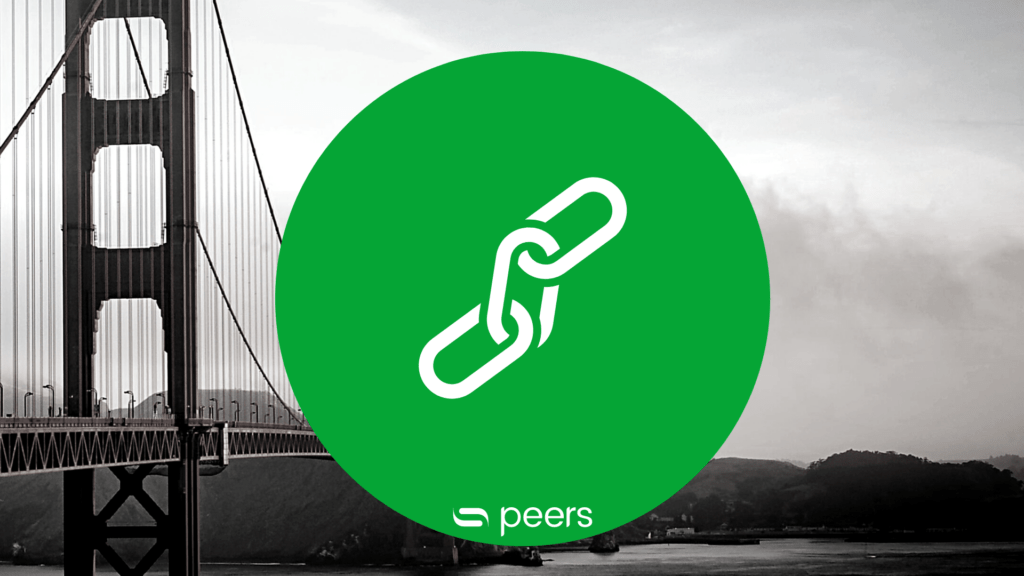SAP BW/4HANA - A secure source of knowledge and intuitive user experience
SAP BW/4HANA manages all types of data, regardless of whether they are from SAP applications and other systems, structured or unstructured, and provides access to all models via an open SQL interface. SAP BW/4HANA features the latest in user interfaces for administrators, developers and end-users , as well as processes that are fully optimised for SAP HANA, allowing you to use vast quantities of data in real time to gain a competitive advantage.
Gain quick and accurate insights
Results and key figures can be generated in real time. This creates far greater efficiency and agility when it comes todata preparation and the speed of decision-making.
Using digitalisation to create business value
With the Big Data warehouse, more comprehensive insights and business values can be extracted from large volumesof data.
Simple data modelling
The development effort is considerably reduced and administration of the data is made significantly more simple.
Very user-friendly
An intuitive user experience and the integration of applications from SAP and other providers increase productivity.

Training for SAP BW/4HANA Business Warehouse
Expand knowledge in the area of SAP BW/4HANA and make everyday work easier.

What is SAP BW/4HANA?
SAP BW/4HANA is a data warehouse application package designed as an on-premise warehouse variant for the SAP Business Technology Platform. With SAP BW/4HANA, all the data in the entire company can be prepared for a consistent view across all departments.
With the Business Warehouse (BW), data analysis can be accelerated by obtaining data from a data warehouse (DW). This allows large amounts of data to be processed in real time.
SAP Business Warehouse continues to be a powerful data warehouse tool for consolidating master data, and provides various flexible reporting options. With SAP HANA as the database within the BW system, a combination of DW functions and a fast in-memory database can be used to generate improvements in performance and exceptional modelling capabilities.
The HANA in-memory database is much faster than other common databases such as Oracle and SQL Server, which means that the DW works significantly faster.
How does SAP BW/4HANA work?
1. Data integration: data from a wide variety of sources can be integrated into SAP BW in many different ways.
SDA | HANA Vora:
Direct access to remote systems (e.g. S/4 HANA, HANA Native, IBM DB2, MS SQL, Oracle, Hadoop and Spark) makes it possible to use real-time data in the analytical process without further persistence.
Replication Server | SLT:
Source systems are connected to the SAP BW in the shortest possible time using replication technology. Depending on requirements, the data is persistently available in near-real-time. This option represents a highly efficient industrial solution for the majority of the systems to be integrated.
Data Services | SAP Business Content:
All other sources can be connected via mature and powerful ETL components.
SAP BW Health Check already performed?
2. Data management: simple and clear provision of all necessary data
Simplified design principles and a wide range of platform interfaces make it easy to integrate the required data and make it available for evaluation at an early stage. The traditional data warehouse layers (e.g. persistent data marts with complex transformation logics) are available as usual. For ad-hoc queries however, the data can already be taken and used from the integration layer.
This is where the powerful data modelling capabilities of SAP HANA come into play. The SAP BW automatically generates HANA views for each data model, which can be combined with each other (and with external data sources) as you see fit. Thereafter, further data modelling can be implemented with the HANA graphical interface or alternatively with standard SQL, other languages (e.g. R. Python) or SQL-based front-end tools.
All known and mature SAP BW functions for data warehouse operation (including scheduling, monitoring, delta management and authorisations) are of course still available in parallel.
3. Access to information: from all departments and for all employees
Employees in each department have access to user-friendly BI and data mining tools.mining tools to meet their information needs quickly and in a well-founded manner. information needs:
Design studio / Lumira:
Mobile, interactive and role-based dashboards provide your decision-makers with reliable aggregated data and therefore the most transparent insights into your current business situation.
Analysis for Office:
Measure your business success with modern reporting tools. Use actionable insights that add genuine value to your value creation to steer your business areas. Use the integrated and granular database to get accurate answers to new and unexpected business questions.
HANA information modelling:
Increase your company's responsiveness via self-service BI, with the added advantage of reducing IT costs and workload.
Predictive analytics:
Reliably identify trends and patterns with predictive analytics. Reduce forecasting model creation time to just a few minutes through automation. Get additional unique insights into customers, business processes and markets.
HANA platform:
Benefit from the open platform and use your analytical data to make your operational business processes smarter and faster.

The top 4 BW/4HANA benefits - see for yourself!
Quick access
In-memory function provides quicker data access
Flexibility
Cloud and On-Premise-Provision
Simplicity
Simple data modelling andadministration
Making connections
Integration with applications from SAP and other providers
KNOWLEDGE
Useful information
The BW Bridge is presented by SAP as a way of transferring a system from a classic on-premise environment to the SAP Datasphere (formerly Data Warehouse Cloud). This interview was conducted by Daniel Moser (Senior Account Manager, s-peers AG) with Eugen Gering...
This article describes SAP BW Bridge, a new solution that connects enterprise information systems with SAP Datasphere (formerly Data...
Since the introduction of BW (on | 4) HANA, users have had access not only to "classic" BW data modelling but also to so-called "mixed case"...
Review of 2017 The turn of the year is a wonderful time to look to the future of the established and proven SAP group accounting solution SEM-BCS....



